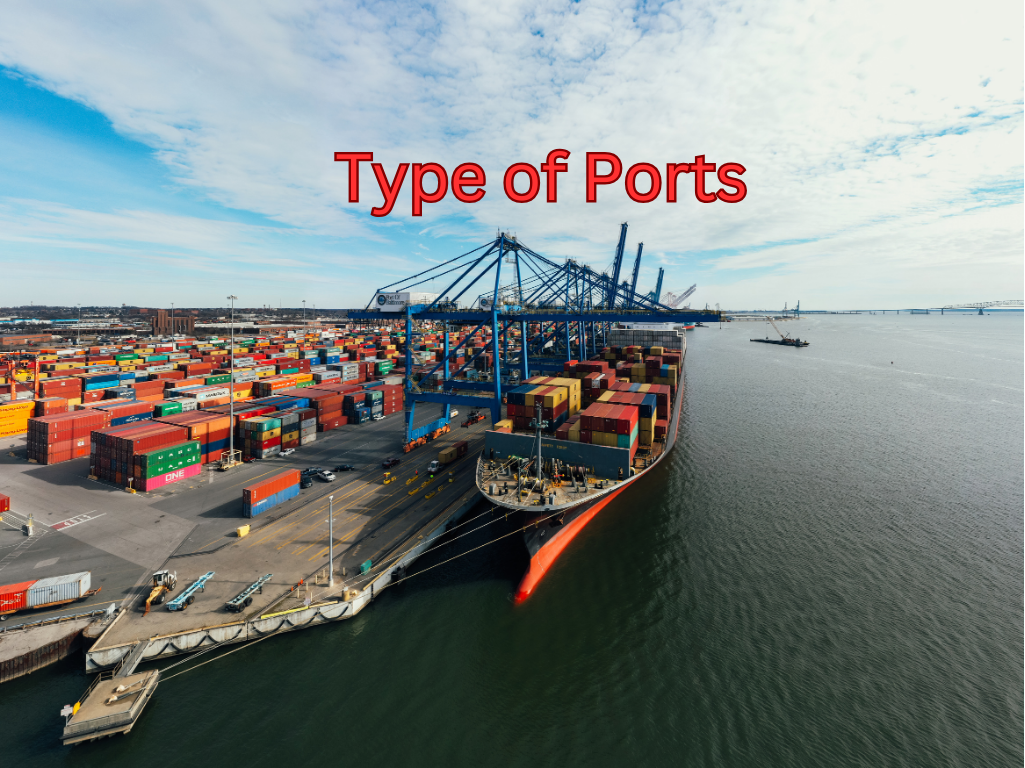
1. Seaport
Infrastructure: Equipped with deep-water docks, cranes for containers and bulk cargo, storage facilities, and logistics systems.
Operations: Uses Port Community Systems (PCS) to streamline communication and automate processes, enabling efficient handling of high cargo volumes.
Global Role: Major seaports, such as Shanghai and Rotterdam, serve as gateways for millions of TEUs annually, connecting regions through critical international trade routes.
2. Inland Port
Infrastructure: Includes rail terminals, container yards, warehousing, and customs facilities.
Operations: Facilitates the movement of goods between coastal ports and remote areas, reducing congestion in major port cities.
Global Role: Inland ports like the Virginia Inland Port increase connectivity for remote regions, enhancing national and regional supply chains.
3. Dry Port
Infrastructure: Contains container yards, customs zones, and rail terminals.
Operations: Enables customs processing away from coastal ports, speeding up cargo movement and reducing wait times.
Global Role: Dry ports, like Modjo in Ethiopia, provide essential links for landlocked nations, lowering logistics costs and boosting competitiveness.
4. Transshipment Port
Infrastructure: Features efficient container handling and transshipment zones.
Operations: Transfers cargo between larger and smaller vessels for route optimization and cost savings.
Global Role: Ports like Singapore are critical transshipment hubs, connecting Asia, Europe, and Africa with streamlined international shipping.
5. Container Port
Infrastructure: Equipped with container cranes, expansive storage, and automated systems.
Operations: Dedicated to efficient handling and distribution of containerized cargo, reducing delays in global supply chains.
Global Role: Ports like Los Angeles play a significant role in global trade, supporting distribution for numerous industries.
6. Cruise Port
Infrastructure: Passenger terminals, passport control, and tourism facilities.
Operations: Focuses on passenger convenience with efficient customs processing for smooth traveler flow.
Global Role: Popular cruise ports like Miami drive economic benefits through tourism and job creation.
7. Fishing Port
Infrastructure: Features specialized docks, cold storage, and processing facilities.
Operations: Quickly handles and preserves fish for distribution to local and global markets.
Global Role: Ports like Tsukiji in Tokyo are vital in providing fresh seafood and supporting fisheries and food processing sectors.
8. Bulk Port
Infrastructure: Utilizes conveyors, loaders, and storage for large bulk commodities.
Operations: Efficiently handles raw materials, adhering to environmental standards to safeguard resources.
Global Role: Bulk ports, like Port Hedland in Australia, are essential for exporting resources such as iron ore, contributing to global supply chains.
9. Free Port
Infrastructure: Offers storage, light manufacturing, customs offices, and duty-free zones.
Operations: Reduces costs and lowers trade barriers, streamlining goods processing and export.
Global Role: Free zones like Jebel Ali in the UAE attract international businesses with reduced tariffs, enhancing trade.
10. Industrial Port
Infrastructure: Located near production centers, with facilities for handling industrial materials.
Operations: Supports supply chains for industrial production, reducing logistics costs.
Global Role: Industrial ports, such as Houston’s petrochemical hub, are crucial for supporting manufacturing and distribution.
11. Naval Base (Military Port)
Infrastructure: High-security zones, ammunition storage, and facilities for naval operations.
Operations: Provides defense logistics, ensuring naval readiness and national security.
Global Role: Strategic ports, like Norfolk Base in the U.S., play essential roles in maritime defense and international security.
Each type of port plays a unique role in the global logistics network, ensuring the efficient movement of goods and services worldwide, which, in turn, contributes to the economic development of nations and regions.
Conclusion
Understanding the different types of ports helps businesses and individuals make informed decisions about shipping and logistics, optimizing global supply chain strategies. Whether you’re a logistics manager, business owner, or just interested in international trade, knowledge of these port types offers insights into the opportunities and challenges of today’s global marketplace.